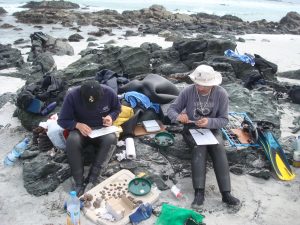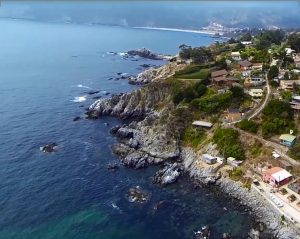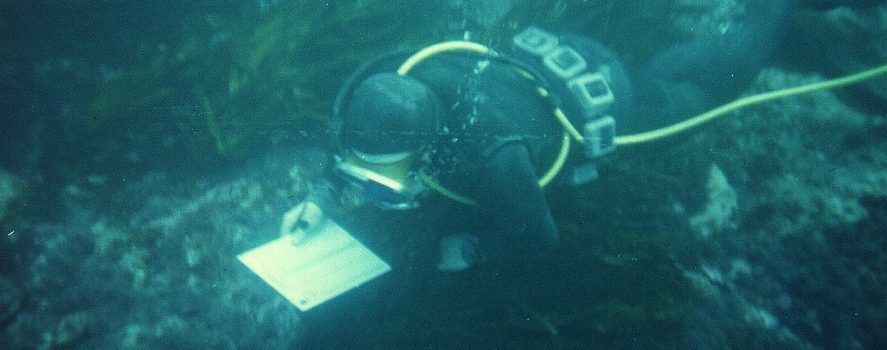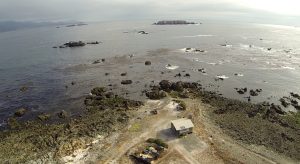IFOP Project “ 2019 Fisheries Monitoring Program under Management Area Regime,” held a dissemination workshop
September 17th, 2020
Via Google Meet, IFOP held “ 2019 Fisheries Monitoring Program under Management Area Regime,project ” dissemination workshop with representatives of Undersecretariat of Fisheries and Aquaculture, SERNAPESCA, Economy Undersecretariat , as well as AMERB organizations technicians in charge of research, and other guests (TNC, UVM) participation . Results of Fisheries Development Institute research develops in the field of Benthic Resource Management and Exploitation Areas (AMERB) were presented, in its role as advisor to the Undersecretary of Fisheries and Aquaculture (SSPA).
AMERBs are a fundamental part of the most important regime of fisheries management in Chilean benthic fisheries, through which exclusive rights of use and exploitation of invertebrate resources and algae are granted to legally constituted artisanal fishermen organizations. They must report the performance of the AMERB to the Undersecretariat of Fisheries, through periodic monitoring carried out by technical advisory bodies. SERNAPESCA is the institution in charge of controlling fishing activity, compliance with the measure, and related legal procedures.
Luis Ariz, IFOP Management Areas Section head, pointed out that: “The workshop was a good opportunity to show what we are doing on AMERB issues. We have made enormous efforts to generate information on different areas that characterize management areas as complex eco-social systems, which makes it necessary to face integration of information taking into account its different dimensions, either in the socio-economic and organizational aspects. , ecologically – environmental, quality management of AMERB information, complementary studies that help decision making, such as understanding connectivity of local populations of locust resource. In short, our efforts are aimed at preparing proposals to improve the AMERB regime, under an ecosystem approach ”.
Pedro Romero,Project, Researcher spoke of the socio-economic and organizational aspects. He gave an account of AMERB regime economic evaluation , in volume and income, as well as its exports for the five main resources (locust, limpets, hedgehog, macha, brown macroalgae); in addition to projecting international demands for hedgehog and macroalgae resources. In evaluating the performance of the AMERB Regime, information from socio-economic and organizational monitoring was used, focusing its analysis on profitability, contribution to income, vulnerability of users, and organizational aspects. The main results indicate a low expectation of growth in export prices of seaweed and sea urchin, which is added to lower economic results and an increase in fishermen under a situation of economic vulnerability, recommending to incentivize economic development based on generating greater aggregate .
In her side , Eliana Velasco, IFOP biologist, referred to the monitoring of structuring species of benthic communities in AMERB, in areas of south central Chile, with emphasis between the Tarapacá Region and the Coquimbo Region, where higher national landings. In the regions of Atacama and Coquimbo, there has been renewal of forest or seaweed meadow, reflected in population increase (density) and predominance of adult individuals, with a stable population in the medium and long term. On the contrary, the regions of Tarapacá and Antofagasta, where a population decrease is shown with a predominance of juvenile individuals (decrease in the diameter of the disk) with a forest without effective renewal capacity, implying a population in decline in the short and long term.
IFOP Environmental aquaculture engineer Gabriela Arenas, referred to quality management of AMERB information related issues, regarding drafting of standard sampling procedures in management areas, based on proposals for specific sampling designs ( which include algorithms of abundance and biomass parameters) estimators, depending on whether they are benthic species of habitat of rocky or soft substrates (be they invertebrates or algae).
On the other hand, Bryan Bularz, IFOP marine biologist, presented IFOP AMERB Database contents , which integrates data from studies carried out by technical organizations, from 1998 to 2019. Likewise, advances in the automation of data analysis processes, in order to optimize the exchange of information and data between IFOP and Fisheries Undersecretariat.

Finally, Catherine González, project researcher, analyzed local populations of the locust resource connectivity between AMERB through biophysical modeling between Antofagasta and Valparaíso, including a high-resolution model in Coquimbo great bay. Regarding locust dispersal and recruitment, considering background information on its larval development provided by experts, a deep phase was incorporated into the biophysical modeling, generating a very conservative scenario in relation to its dispersal potential, compared to a classic dispersal model. . In both biophysical models, a diversity of dispersal patterns was observed between Antofagasta and Valparaíso, with exchange practically in all the AMERBs, but with smaller dispersal distances of larvae in the great bay of Coquimbo. Likewise, the presence of an oceanographic filament at 28.8 ° S that would generate a barrier for larval dispersal was determined, which could constitute the limit of two independent population units.
Mario Acevedo, current Fisheries and Aquaculture Undersecretariat Benthic Resources Unit Coordinator , pointed out that: “Within this project framework, the State’s objective is AMERB regime permanent evaluation, considering biological, fishing, ecological, economic and social aspects, under a comprehensive approach, seeking balanced development through evaluation at local and national level, including interaction with other management alternatives of the artisanal benthic fishing sector. In this context, the results presented at the workshop are intended to contribute to this objective and to decision-making, thus contributing to the implementation of sectoral policies according to their development ”.

